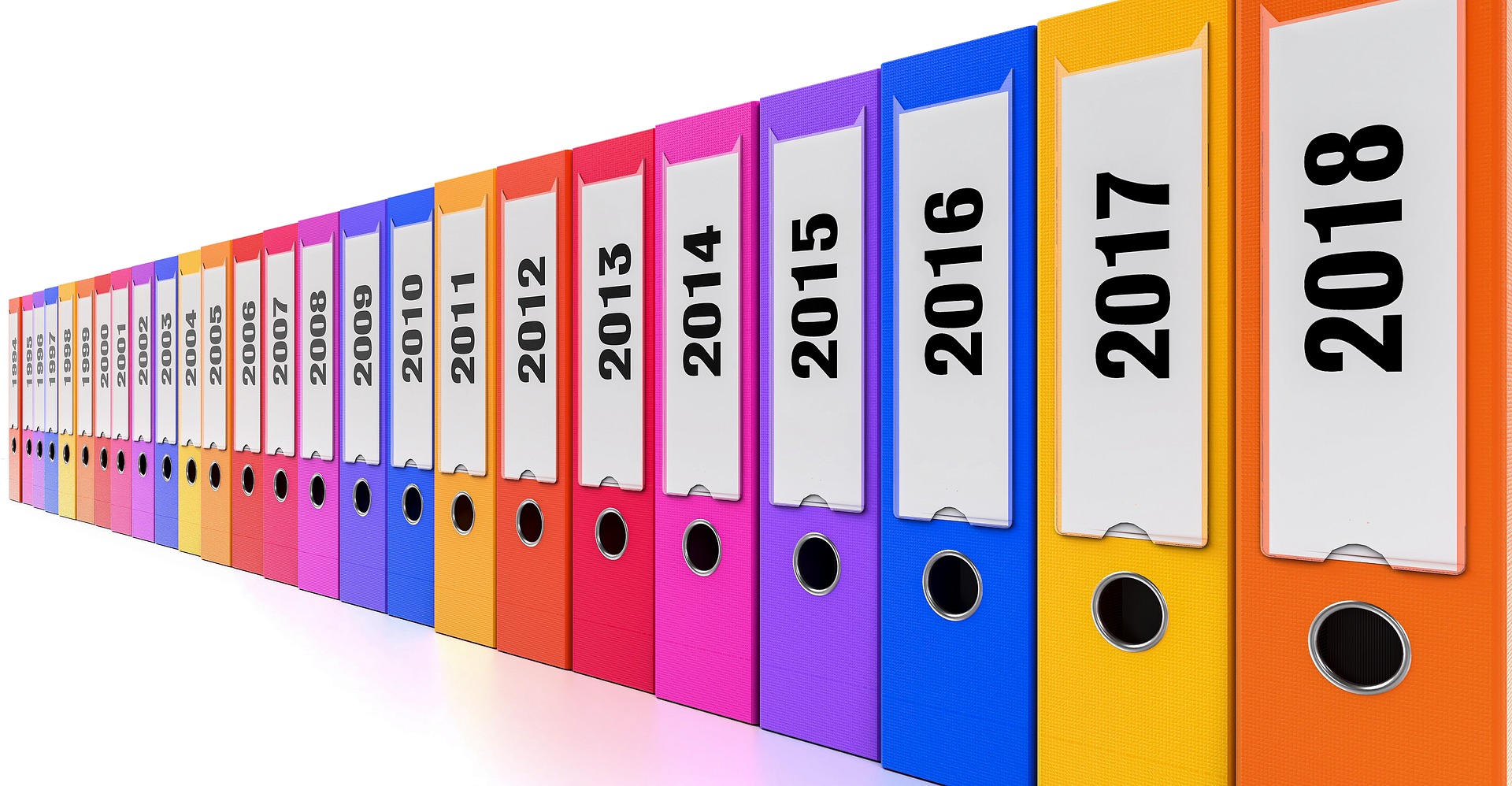21 Aug The Complete 19-Point Checklist for Writing Checklists via @stoneyd
Checklists are essential to tackling a project thoroughly and completely.
They ensure there is process cohesion between parties who may be involved in completing them and, most importantly, that nothing is forgotten during the execution.
The fact that I love checklists is no closely guarded secret. Anyone who’s known me for more than a paragraph will know that I’m a checklist kind of guy.
More to the point, I’m the guy who adds things I’ve already completed to my checklist just so I can mark them off.
So, when I was asked (read: volunteered) to draft a post on how to write checklists, I gave it careful consideration (read: jumped at the chance.)
And if you need more proof of my checklist writing credentials, I dropped the mic on checklists when I published The Best Damn Web Marketing Checklist, Period!
No, that’s not me bragging, that’s the title of the book. And believe me, it doesn’t fail to live up to its name.
OK, that’s me bragging. But only because you need to know that if there is anyone that knows a thing or two about writing checklists, it’s me.
And now, I’m going to lift the proverbial veil on the proverbial magic so you can create your own non-proverbial checklists and get proverbial doo-doo done.
Phase I: Investigation
The gods have forbidden certain images from being used in this post so you’ll have to imagine a certain meme when I say: One does not simply write a checklist. (You know the one I mean!)
A good checklist starts with a thorough investigation into the what and why of whatever it is you’re trying to accomplish.



 Know Your Objectives
Know Your Objectives
Each point on a checklist is just one step needed to get you closer to your goal.
If you don’t have a solid understanding of what your goal is, then there is a strong chance that you may leave out some important steps needed to achieve them.
Before you begin making your checklist, take a step back to assess what you want to accomplish.

 Know the Value of Each List
Know the Value of Each List
If you are building multiple checklists, it’s important that you understand the value of each list independently.
For example, I have a checklist for traveling to make sure I don’t forget anything important. The last thing I want is to go a week without any underwear!
But, in my travel checklist, I have several other sub-lists as well: One for camping, one for business trips, one for snow skiing.
If I was passing my packing checklist over to someone else to complete (not that I want anyone else packing my underwear, but just roll with me here), they’d need to understand that when packing, they should be selective about which list(s) they follow.
When I’m snow skiing, I don’t need my tent and Coleman stove. And I usually don’t need my snow socks or long underwear on a typical business trip.
By having a clear value for each list, the person executing the list can make informed decisions about what is important at any given time.

 Research
Research
Whenever I’m creating a checklist (this one is no exception) I like to see what other people are doing, suggesting, or what they think is important.
I can often find anywhere from one to a dozen similar checklists, each with their own unique insights and perspectives.
I’ll jot down anything that I see on each list that resonates with what I want to accomplish. This helps me produce a more comprehensive list than anything I would have been able to get on my own.
Phase II: Creation
The next step in building your checklist is to actually start building it.
I’ll use a number of different programs (Google Tasks, ToDo Cloud, Teamwork, Apple Reminders, etc.) depending on the type of list I want to create, but it almost always starts in a text document of some kind.
I consider that my working document until I get everything outlined and it’s ready for publication.



 Jot Down All the Points
Jot Down All the Points
We did a little of this above during the investigation stage, but this is where you make sure to get everything documented into a, um, document of some sort.
Every point you brainstormed on your own and those that you found through R&D (ripoff and duplicate!). Once they are jotted down you can then begin the next steps.

 Know the Value of Each Task
Know the Value of Each Task
When pulling in ideas from multiple locations you’ll often come across some that are more or less valuable than others. Some may not be at all, and others can be combined into a single task.
Be sure you fully understand each task going into your list to ensure your checklist isn’t overly bloated with items that don’t really fit the overall goals.

 Write Titles That Reflect the Objective
Write Titles That Reflect the Objective
Every point on your checklist must have an adequately informative title. Ideally, that would be all that’s needed for someone (including yourself) to read and know what needs to be done.
That being said, keep your titles short. They are just a reminder of what needs to be done. Don’t be too vague or descriptive but find a nice balance in between.

 Write Simple, but Fully Detailed Descriptions
Write Simple, but Fully Detailed Descriptions
Each point should include a fully detailed description to ensure whoever is completing the checklist can do so without seeking out additional instruction.
Be sure to avoid any type of information that is subject to change. I’m a bigger fan of ‘what-to-do’ lists than ‘how-to-do’ because ‘how-to’ often changes more than ‘what-to’.
In the end, however, you want to be as robust as possible. That saves everyone time later on. (Caveat: I do not need detailed descriptions on how to pack my t-shirts. Yet.)

 Consistent Formatting
Consistent Formatting
As you build your list you want to maintain a consistent way of formatting your point, descriptions, sub-points, examples, etc.
Find a format that you can reuse from one checklist to the next so you don’t have to reinvent the wheel each time.
But the most important thing is making sure each point is clear, easily scannable, and easily completable.

 Create Needed Sub-Points
Create Needed Sub-Points
Some tasks may require a short checklist of their own.
It’s tempting to throw a few sub-points into the description text, but that will often lead them to getting overlooked. The description is for noobs.
You don’t want to force anyone to have to read it each time. Make sure your sub-points stand out as action items.

 Know Who Needs to Be Involved
Know Who Needs to Be Involved
Not all checklists will be for you to complete; some will require multiple people to get involved. You want to know this upfront so you can assign each point to the proper person responsible.
Planning this out in advance ensures that each point of the list can be completed or passed on in a timely manner for the full list to be wrapped up with minimal supervision.
Phase III: Organization
Once you have all your points, the next step is to organize them in a way that makes sense both in terms of how they are executed and in what way.



 Categorize
Categorize
I like to organize my checklists into categories. Just like this one you’re reading. I could have put all the points in a single list, but it made sense to me to categorize them into chunks based on intent.
I find categorization a great way to better understand how different points interrelate. It’s also a great way to make sure similar items are grouped together.

 Prioritize
Prioritize
There are several ways you can prioritize your checkpoints and they may vary from list to list. It’s important that you find the best prioritization order for the goals you are trying to achieve.
- By completion – Some checklists have a clearly defined order in which they should be done. If this is the case, be sure to keep them in the proper sequence. This checklist is a perfect example of that.
- By importance – If tasks don’t have a required completion order, the next best way to prioritize is usually by how important each task is in relation to the others. Generally, three categories will do: Urgent, Important, Will Get To This Someday.
- By time – Another good way to prioritize is by time expected to complete the tasks. Sometimes it’s great to bust out the quick-and-easy tasks first, but if time management is an issue, you can work on tasks based on the time you have available right now. Get done what you can and then move on.
- By ability – Some items on a checklist can only be completed after some external forces have done something of their own. For example, I have checklists for optimizing web pages, but we frequently must get the client’s feedback before one or more of the steps can be completed. It can be helpful to segment out any points that can only be achieved after something else has been done first.
- By due date – Another clear way to prioritize points on your checklist is by due date. You always want to get time-sensitive tasks done sooner while putting off those that can be done anytime.
Phase IV: Completion
No checklist about checklists would be complete without being able to complete it. (You know what I mean!)
After all, what’s the fun in building a checklist if you can’t get it done, right? So here are a few checklist completion pointers.



 One at a Time
One at a Time
I know, ridiculous, right? But in our always-multi-tasking lives, it bears to be said that you generally want to complete one thing at a time.
There is nothing that I hate more than having unfinished tasks once I’ve started.
If you need to wait for feedback, sure, move on to the next one, but get back to any tasks you’ve started as soon as you can so you can wrap them up and send it home. Proverbially speaking, of course.

 Outsource as Needed
Outsource as Needed
If you or your team are not able to complete the checklist yourself, or can’t do it within the desired completion time, it’s okay to outsource. Seek outside help when necessary to keep yourself on track.

 Mark Them Complete
Mark Them Complete
When a task is done, mark it complete. Again, sounds like a no brainer but sometimes we forget this important step.
Not only does marking each point complete give you a sense of accomplishment, but it also saves you the hassle of having to remember what you have or haven’t done if you get interrupted.
Seriously, don’t kill the joy from having a checklist. Mark completed items complete.
Conclusion
There you have it. Everything you need to know about building a great checklist. Personally, I find no better way to work.
Face it, memory fails us. And the time spent trying to remember what to do is time better spent actually doing what you want to do, to begin with.
And add to the fact that when you have a checklist, you are far less likely to leave out a critical step either now or later.
Not only do checklists help you get crap done, but it helps others as well.
It unites expectations, goals and the processes to achieve them. It allows anyone to jump in and help complete the tasks without having to re-learn or build their own processes.
The memory work has been done, now they just have to make the magic happen.
And now I get to mark, “write a post about checklists” off my checklist!
More Resources:
- A Complete SEO Checklist for Website Owners
- SEO Maintenance Checklist: Crucial Daily, Monthly, Quarterly & Yearly Tasks
- A Technical SEO Checklist for the Non-Technical Marketer
Image Credits
Featured Image: Pixabay (Modified by author, August 2019)
In-Post Image #1: Pixabay
In-Post Image #2: Pixabay
In-Post Image #3: Pixabay
In-Post Image #4: Pixabay
Sorry, the comment form is closed at this time.